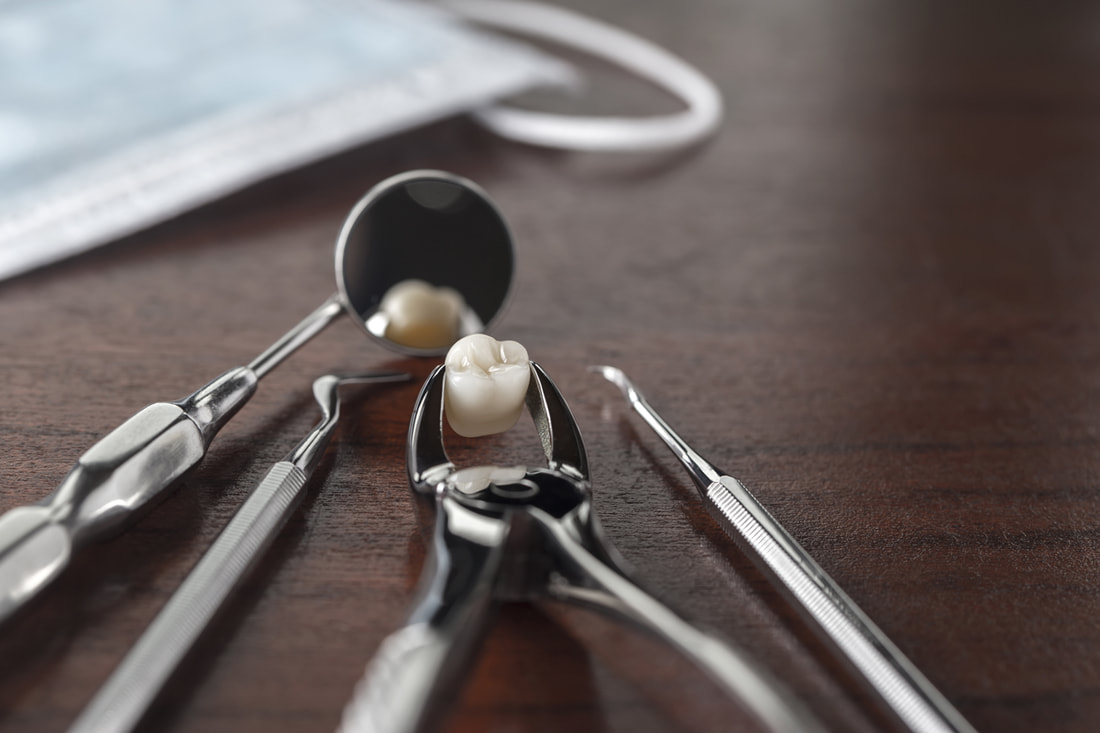It could also be that your teeth are badly overcrowded at a particular point, which can cause undue wear of tooth enamel off the crowns of numerous teeth.
Finally, if you have advanced periodontal disease, your tooth may be very loose and ready to fall out anyway. It may also be decayed enough that it’s not worth trying to save it.
What Is A Simple Extraction?
Extractions are of two basic types: simple and surgical. But what’s the difference?
A simple extraction is one where your periodontist can easily see (above the gum line) and grasp with dental forceps, the tooth can simply be removed.
After administering a local anesthetic and/or dental sedation, he/she simply puts pressure on the tooth with the forceps and pulls it out. An experienced practitioner will know precisely how to do this with the minimal amount of pain possible and without harming your gums, underlying bone, nerves, or adjacent teeth.
It also takes skill to remove a tooth in one stroke, without splintering it, although it may be necessary to split a tooth in two for some more complex extractions.
What Is A Surgical Extraction?
A surgical extraction is just what it sounds like, a tooth extraction that requires a (small and basic) surgical operation.
When a tooth that must be extracted is sunk too far under the gum line, a surgical operation on the surrounding gum tissue will be necessary. It may be the tooth has not fully come in yet, came up at an angle and got “impacted,” or you may just have high gums.
Wisdom teeth often get impacted and must be removed surgically. Other times, a tooth may have long, curvy roots that would break off in a simple extraction. Or, the bone tissue around a tooth root may have gotten too thick.
Finally, a simple extraction can sometimes become a surgical one IF the tooth breaks apart while being extracted. It’s not always possible to prevent this, so you shouldn’t automatically blame your dentist. But if it happens, the individual pieces of the tooth may have to be surgically removed one by one. This often occurs when the tooth has been subjected to acute trauma, or when a root canal has been placed in the tooth and trauma occurs later, or if a crown was not placed on a tooth with large fillings .
A quick X-ray and oral exam can usually determine if your extraction will be simple or surgical. If surgical, your gum tissue will need stitches following the procedure. Either way, you’ll be put on a temporary pain medication.
Post-extraction Care
Follow all instructions given by your periodontist carefully after your tooth extraction.
Typically, you need to bite down on gauze for a half hour to stop the bleeding, avoid eating/drinking for two hours, drink plenty of lukewarm water after the bleeding stops, and avoid brushing or flossing for the next 12 hours.
And of course, take the pain medication prescribed to you in the proper dosages until it is fully consumed.
To make recovery quicker, use a periodontist who offer minimally invasive surgical extractions, as does Dr. Raymond A. Kenzik.
Contact Dr. Kenzik in Ormond Beach, FL, today to discuss setting up a tooth extraction appointment – including emergency appointments, and to discuss your tooth restoration options.
